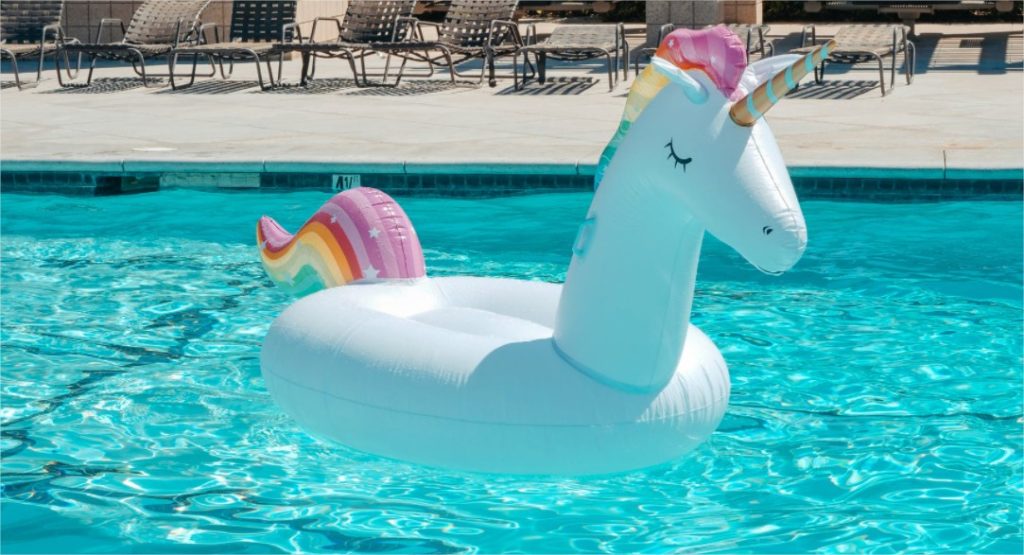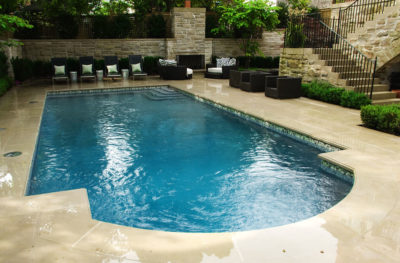If you have a swimming pool, you must be familiar with the struggles of heating a swimming pool. You are always worried about How to Heat a pool? Whether you have an above ground pool or an in-ground pool, the heating needs remain the same because heating your pool brings daily comfort, makes the water pleasant, and guarantees well-being. Heating a pool is essential:
- If you want to swim in spring, autumn or even winter
- Do you want water to be at the right temperature
- If you want to enjoy the pool as much as possible before and after the season
So how do you go about heating a pool? Various systems are easy to apply to heat a swimming pool. Let’s discover the most popular techniques used to heat a pool.
How Solar Pool Heating System Helps To Heat A Pool?
The mechanism of solar heating is: the pool pump injects water into a circuit of black polypropylene pipes via a bypass or by an independent secondary pump. The water present in these black pipes or tubes, also called solar mat, then heat the water as naturally as possible by the sun’s rays thanks to the greenhouse effect. Reinject the hot water into the water basin via the discharge nozzles or a secondary nozzle.
However, there is no need to insert the black pipes in solar mats but joined or rolled up in a transparent dome. The water circulates through these domed pipes, which receive the heat of the sun.
Solar pool heating is best for sunny areas because it uses only the sun’s energy to heat a pool. Therefore, the more sunlight available, the more efficient and reliable the solar pool heater is. It is an economical and ecological heating solution. Solar pool heating requires space for the installation of solar collectors but is easy to install. Install it on flat and sunny surfaces, the garden for example. Solar heating is ideal for above ground pools.
The Solar Rings
Solar rings work in a similar way to bubble wrap. They are made of vinyl, which in essence is a material that captures, stores and converts solar energy into heat. Solar rings are UV resistant. You have to put them on the surface of the pool’s water to capture the heat and then diffuse it throughout the pool. This heating solution is economical to purchase and free to use.
The Bubble Tarp or Solar Tarp
The bubble cover or solar cover is a very economical heating solution for pools. The bubble covers called “heating covers”, and they two sides. One side is opaque and contains aluminium, which helps to capture the sun’s heat because of its unique design. And a second side containing the bubbles whose mission is to transfer the heat to the pool’s water. Unlike other heating systems, it increases the temperature of the pool by just a few degrees. When in use, you can deploy the bubble cover on the pool’s surface and not a good idea to use while swimming. In use, the bubble cover reduces the evaporation of water and reduces the supply of cold water.
The Pool Cover
The pool cover generates a greenhouse effect that automatically heats and maintains the pool water temperature at a higher level than outside. The pool enclosure is similar to a “solar heater” because it heats the pool with the sun. It reduces the pool’s cooling and allows you to enjoy the pool every day, even on windy days. Except for the investment in the acquisition of materials and the pool cover installation, heating a pool is free because the pool cover only needs the energy of the sun to work.
The Electric Pool Heater
The electric heater heats the pool water utilizing electric resistances. In other words, in the working mechanism of this pool heating system, the water passes through the heater, which heats it using electric resistances. The compatibility of the electric heater is only possible with some above ground pools. The electric heater can be installed in the filtration system between the delivery nozzles and the pump. It is sized according to the volume and temperature of the water.
The electric heater is easy to install and has the advantage of heating the water of a pool very quickly. However, the electric heater consumes a lot of energy. It is therefore recommended to use it occasionally or to provide solar panels for its power supply.

The Pool Heat Exchanger
The heat exchanger, also called a heat exchanger, is the perfect pool heating system if you already have a heat pump or a gas or oil boiler at home. The heat exchanger is installed by connecting to the pool filtration on one side and the boiler. Within the heat exchanger, two streams of water flow in opposite directions. The first flow is the hot water coming from the boiler, which will recharge the pool water with heat. A second flow is the water of the swimming pool that goes to be heated in the boiler. The heat exchanger is very economical and easy to install. It favours the fast heating of the pool water. It is also sized according to the volume of water in the pool.
The Pool Heat Pump
The pool heat pump heats the pool water by capturing the external ambient air, transforming this air into heat and finally returning this heat to the pool water. The pool heat pump is installed externally and in the filtration circuit.

It is economical and efficient. The heat pump evens out the temperature of the water in the pool and makes the water pleasant. It is sized according to the volume of water in the pool and the region’s temperature where it is used. The pool heat pump is most often designed for large in-ground pools. However, some models of pool heat pumps are perfectly compatible with large above-ground pools.
In conclusion, to heat a pool efficiently, it is essential to choose the right heating system. And to choose a heating system, it is necessary to take into account :
- Comfort
- The volume of water in the pool
- The available ancillary equipment
- The available budget
- And the frequency of use of the pool
We must also note that some heating systems can be used in complementary.
For example, the solar cover can be combined with the electric heater.






